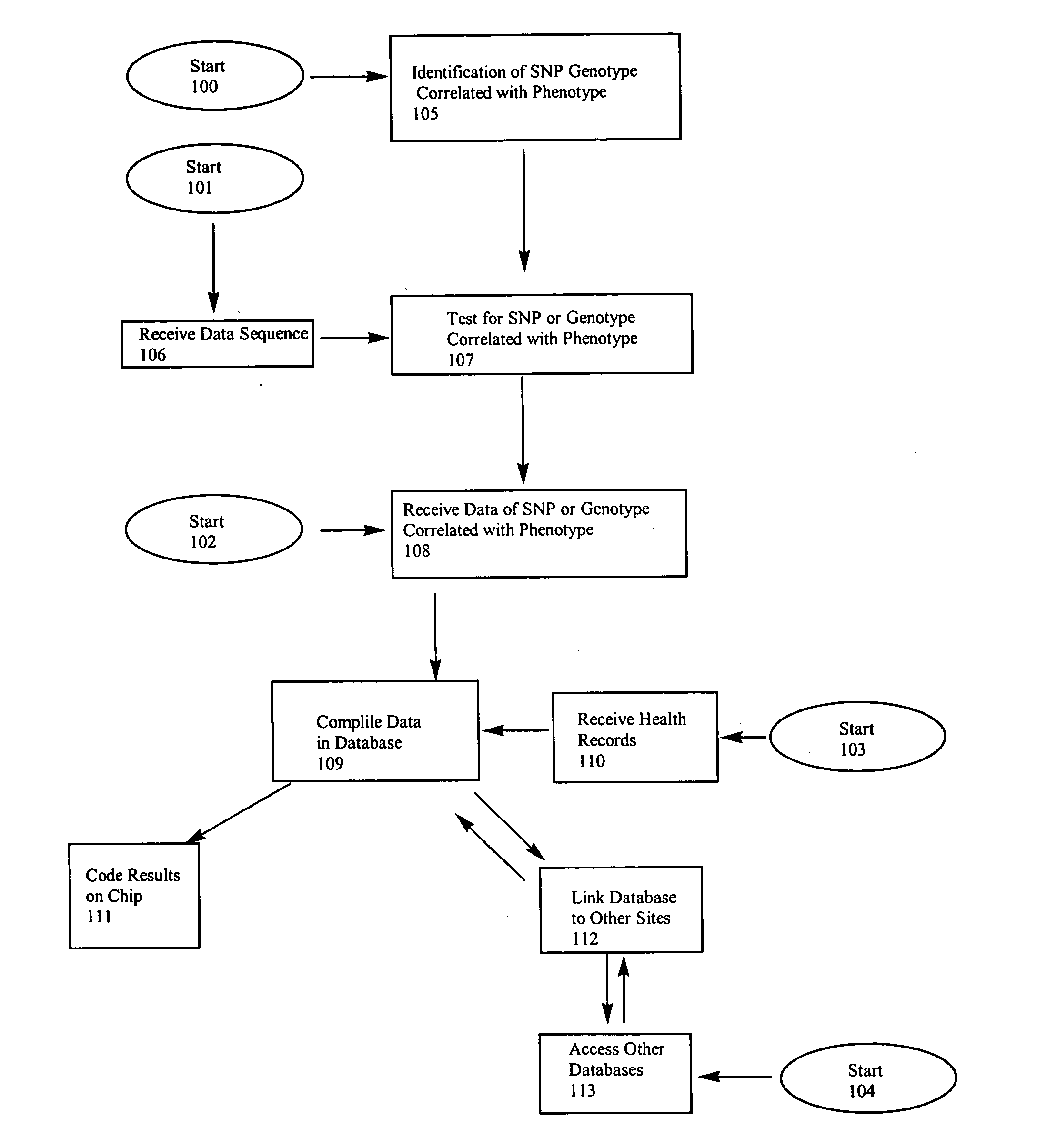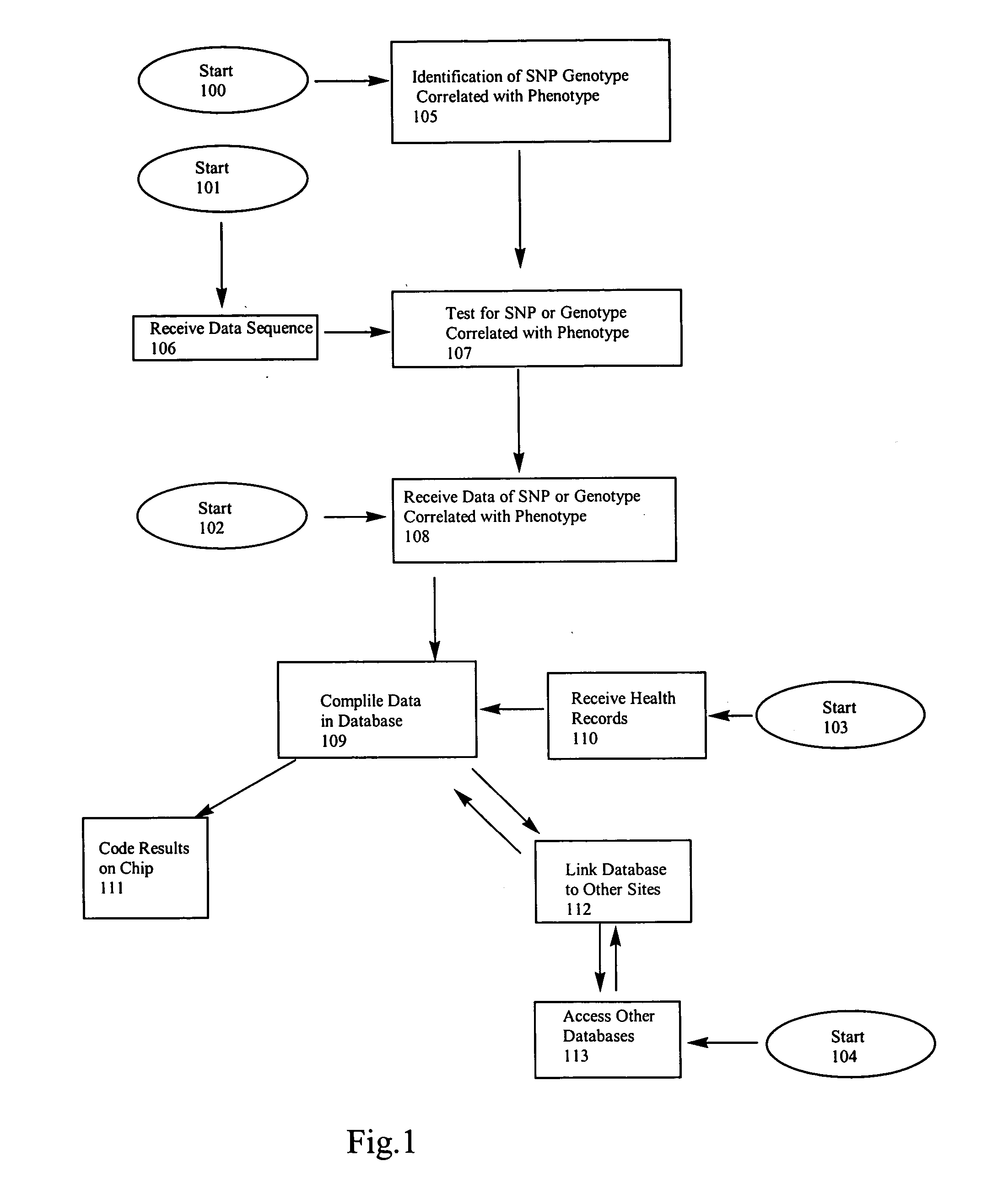Systems and methods for improving efficiencies in livestock production
a livestock and efficiency improvement technology, applied in the field of livestock identification and management systems, can solve the problems of reduced profits, higher meat grades, uncertain inventory, etc., and achieve the effects of optimizing feeding regimen efficiencies, accurate prediction of natural genetic potential to produce quality traits, and efficient management of livestock producers' resources
- Summary
- Abstract
- Description
- Claims
- Application Information
AI Technical Summary
Benefits of technology
Problems solved by technology
Method used
Image
Examples
example 1
[0288] In the present example, cattle were grouped according to the ob genotype, indicating a cow's genetic predisposition for laying down fat. Cattle homozygous for the T SNP, hereinafter referred to as TT cattle, are expected to achieve a high fat grade and are considered to be the most genetically predisposed to lay down fat. Cattle least genetically predisposed to lay down fat, CC cattle, are homozygous for the C SNP. It will be advantageous to feed CC cattle so as to achieve a lower fat grade, or a lean grade, rather than feed them longer to achieve the high fat grade. Heterozygous cattle, i.e., CT cattle, can be fed longer to achieve a high fat grade, or fed shorter to achieve a lean grade, depending on considerations such as market prices, price trends, feed costs, and availability of further feeder cattle to bring into the feed lot, and other like external considerations.
[0289] Genotype testing of feeder cattle in a typical feedlot situation showed a direct correlation betw...
example 2
[0293] Grouping production animals according to their genotype, in addition to the phenotype grouping already used in feedlot practice allows operators to maximize profits by increasing efficiency in livestock production. A group of CC cattle will have the least propensity to deposit fat, making it more profitable for a producer to slaughter this group earlier in the growth curve, near the start of phase three where the growth curve flattens, since these cattle have the least chance of meeting the fat requirements of the optimum grade. Such a group slaughtered early will have a very high percentage of lean carcasses, and this predictability could itself draw premiums from packers seeking to fill orders requiring lean carcasses. On the other hand, a group of TT cattle will have the most propensity to deposit fat. Therefore, it could be more profitable to keep these cattle on feed longer, since it is predictable that a high percentage would accumulate sufficient intramuscular fat so t...
example 3
[0299] A method for extracting DNA from a tissue sample comprises the use of an alkali extraction method employing NaOH. However as will be appreciated by those skilled in the art, KOH could also be used. The alkali typically has a concentration from approximately 150 mM to approximately 200 mM. An advantageous reagent is: Solution A: 200 mM NaOH about 0.5 mM Cresol Red.
[0300] No manipulation of the tissue sample prior to extraction is required. An operative in a laboratory enters the identifying code into a computer database. The volume of reagents used in the extraction is determined by the tissue type and the size / volume of the tissue sample. Typically, sample size / volume is determined on a unit volume basis with a typical unit volume being in the range of 25 microlitres to 100 microlitres.
[0301] A unit volume of 200 mM NaOH (Solution A) is added to the tissue sample in the container. The container is then heated.
[0302] The temperature and period of heating should be sufficien...
PUM
| Property | Measurement | Unit |
|---|---|---|
| melting point temperatures | aaaaa | aaaaa |
| temperatures | aaaaa | aaaaa |
| temperatures | aaaaa | aaaaa |
Abstract
Description
Claims
Application Information
 Login to View More
Login to View More - R&D
- Intellectual Property
- Life Sciences
- Materials
- Tech Scout
- Unparalleled Data Quality
- Higher Quality Content
- 60% Fewer Hallucinations
Browse by: Latest US Patents, China's latest patents, Technical Efficacy Thesaurus, Application Domain, Technology Topic, Popular Technical Reports.
© 2025 PatSnap. All rights reserved.Legal|Privacy policy|Modern Slavery Act Transparency Statement|Sitemap|About US| Contact US: help@patsnap.com


